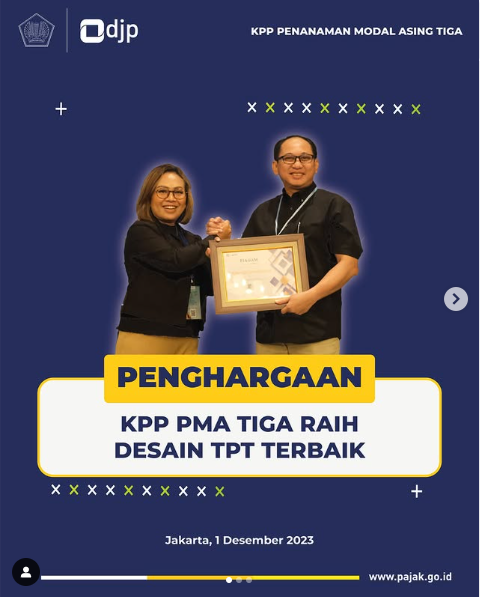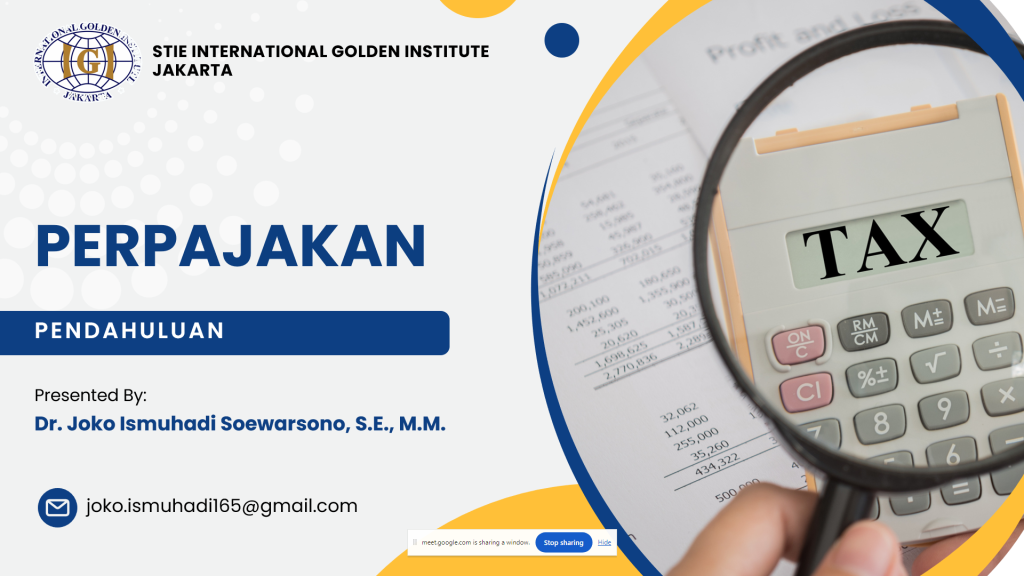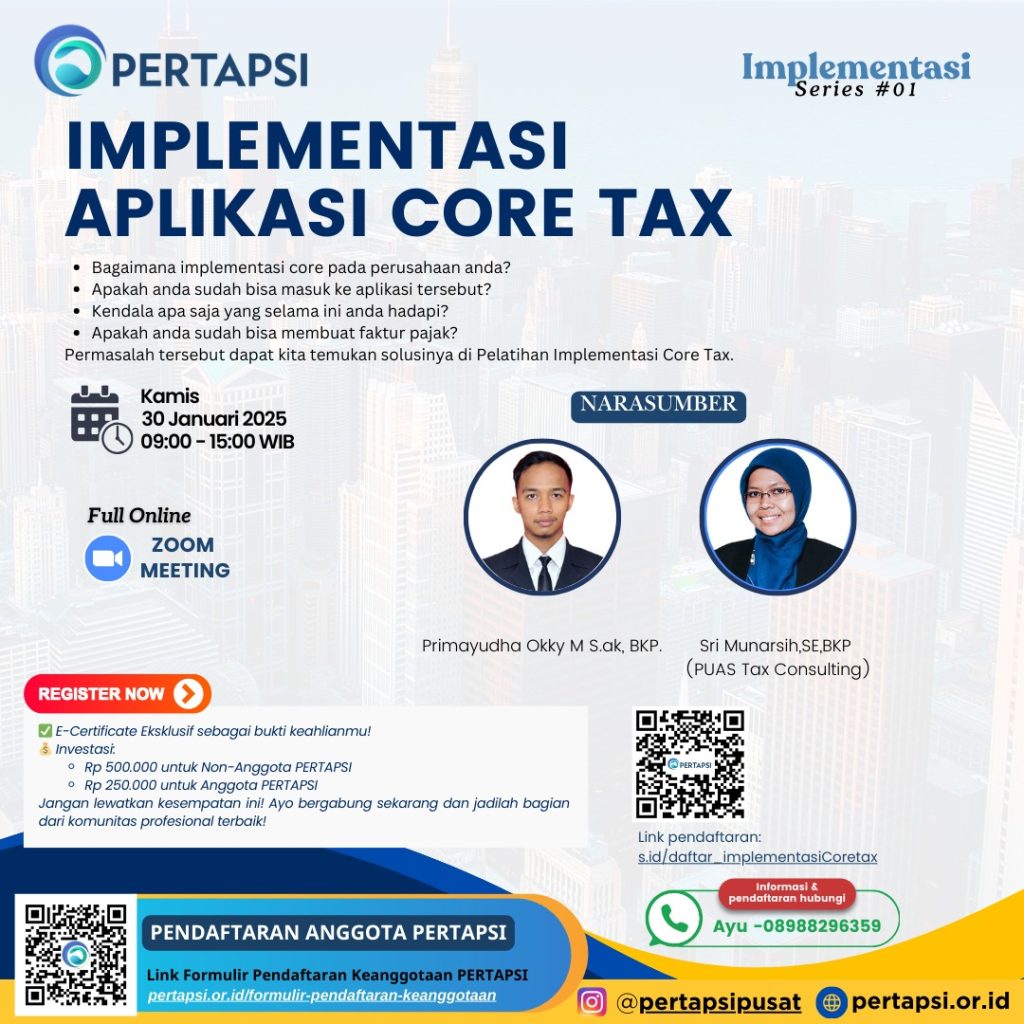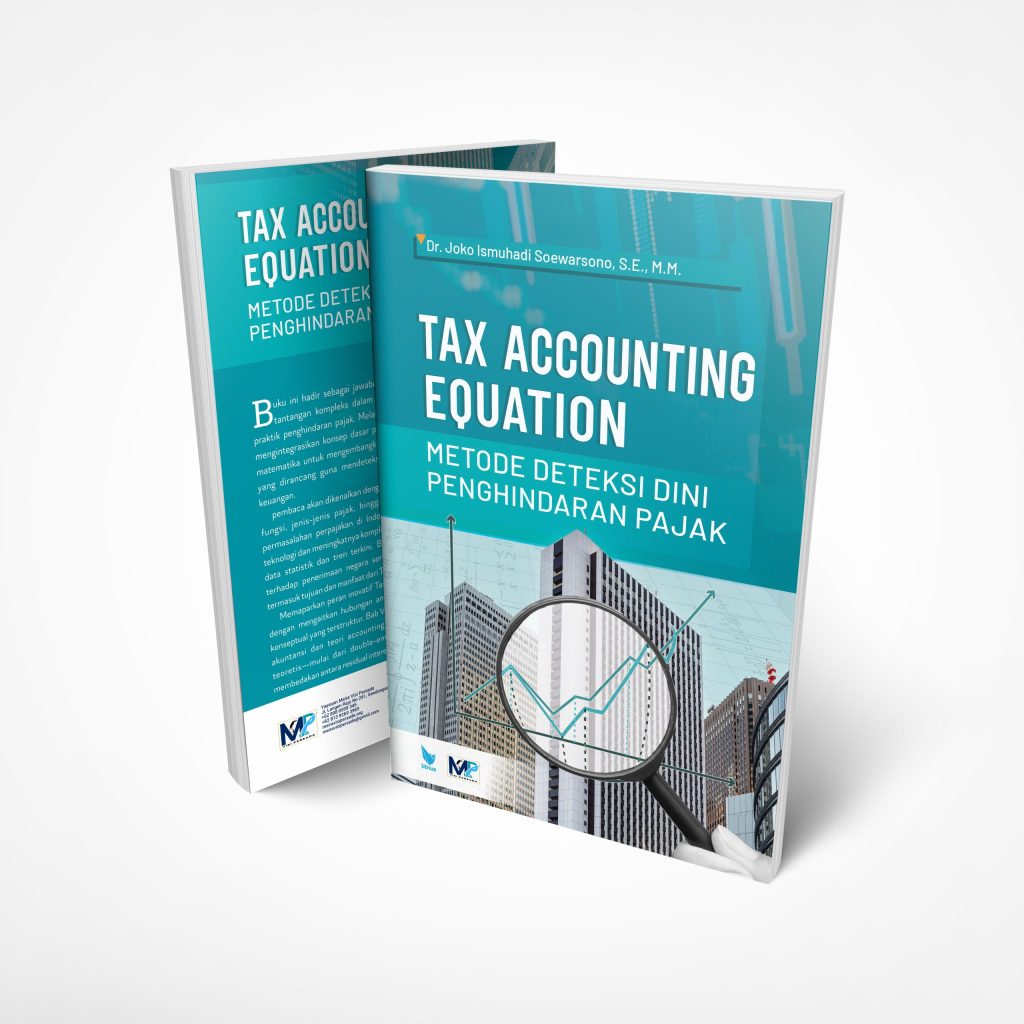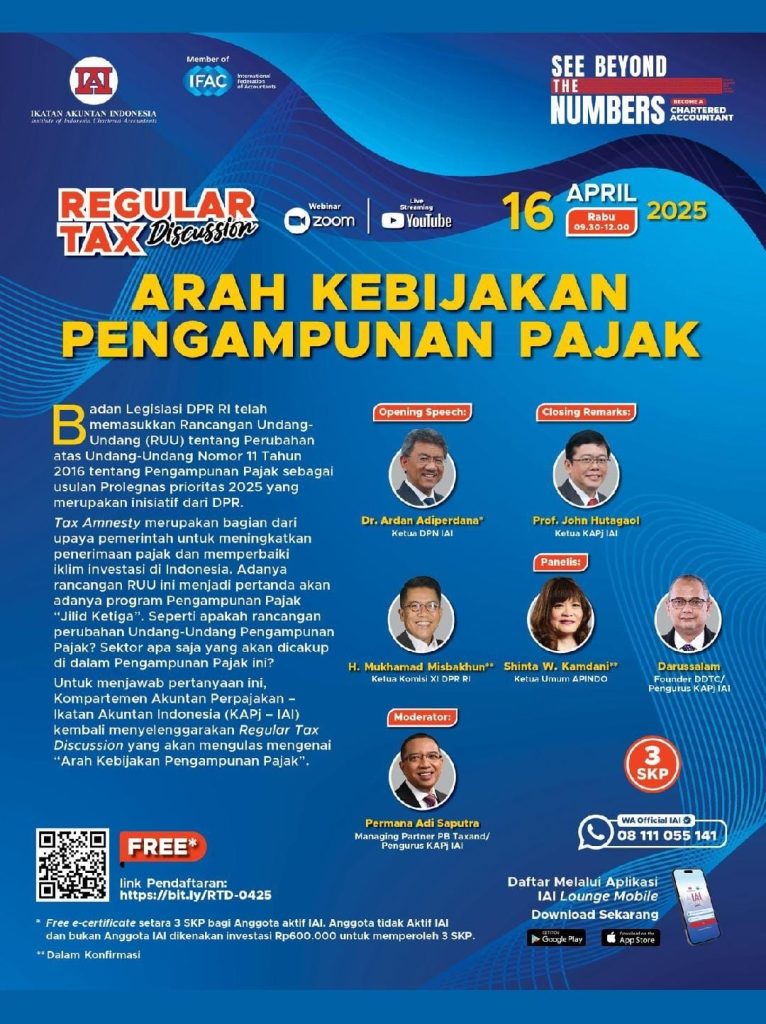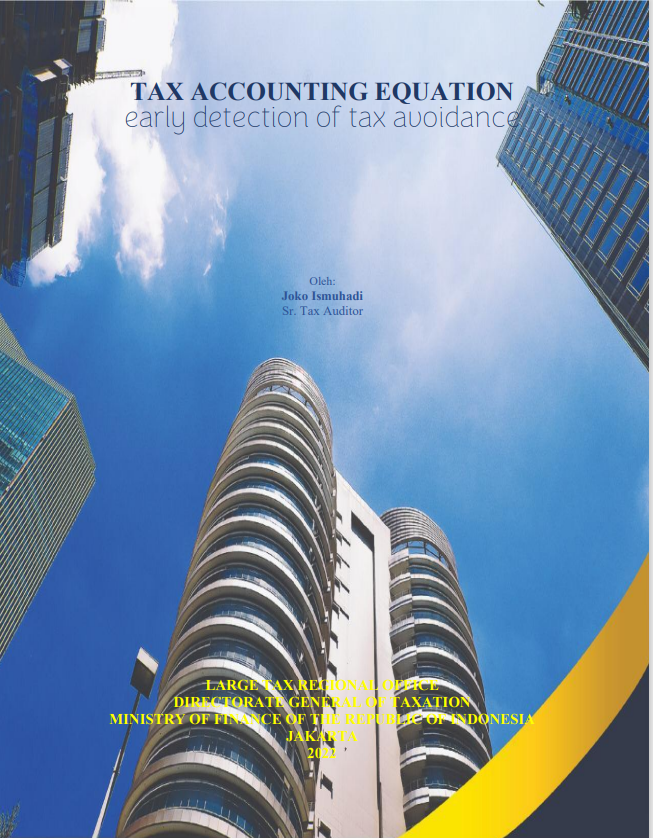
Analysis of the Accounting Equation in Indonesian Tax Law and the Treatment of Debt Reduction
- Ekonomi
Monday, 21 April 2025 14:00 WIB
Jakarta, fiskusnews.com:
I. Introduction
The accounting equation, a fundamental principle in financial reporting, establishes the relationship between a company’s assets, liabilities, and equity. While this equation serves as a cornerstone for understanding a company’s financial position, its application within specific legal and regulatory frameworks, such as tax accounting, necessitates careful adaptation. This report focuses on the Indonesian Income Tax Law (Undang-Undang Pajak Penghasilan or UUPPh) and examines the critical issue of how debt reduction is treated in the determination of taxable income under this legislation. Specifically, it will analyze a potential ambiguity identified in Pasal 4 ayat (1) UUPPh and a proposed amendment aimed at clarifying the treatment of revenue used for debt reduction.
II. The Evolution of the Accounting Equation and its Tax-Specific Adaptations
The basic accounting equation, represented as A = L + e, posits that a company’s assets (A) are financed by either liabilities (L) or equity (e). This foundational equation provides a snapshot of a company’s financial structure at a specific point in time.
The expanded accounting equation, A = L + e + R – E – D, offers a more dynamic perspective by incorporating the elements of financial performance. Here, revenues (R) increase equity, while expenses (E) and dividends (D) decrease it. This expansion links the balance sheet to the income statement, providing a clearer picture of how a company’s operations impact its financial position.
Mathematically, this equation can be rearranged as A + D + E = L + e + R. This form emphasizes that the resources of a company (assets, dividends, expenses) are equal to the sources from which those resources originated (liabilities, equity, revenue).
When adapting these equations for tax purposes, the primary focus shifts to determining taxable income, which forms the base for income tax liability. For analytical tax purposes, a simplified form of the expanded equation can be considered where equity (e) and dividends (D) are assumed to be zero. This simplification, A = L + R – E, highlights the direct relationship between a company’s tangible financial position (assets and liabilities) and its operational performance (revenues and expenses). This analytical focus is particularly relevant for tax auditors and appraisers who often concentrate on verifiable transactions and balances. Tax auditors are tasked with ensuring the accuracy of reported financial information for tax compliance, and by focusing on assets and liabilities, they can more readily verify the financial position of a taxpayer. Similarly, tax appraisers, when assessing the value of a business, often rely on its asset base and profitability, making this simplified equation a useful tool. The exclusion of equity in this analytical context acknowledges that equity can involve more subjective valuations and may not always be the primary focus in certain tax analyses, which tend to prioritize concrete financial elements. Likewise, dividends, being distributions to owners, are often subject to specific tax treatments distinct from the taxation of operating profits.
Furthermore, a tax accounting equation can be derived to illustrate the relationship between the profit and loss statement and the balance sheet: R – E = A – L. This equation directly links the income statement (Revenue minus Expenses equals Profit or Loss) with the balance sheet (Assets minus Liabilities equals Net Assets). This relationship is crucial for tax auditors as they reconcile reported profits with changes in a company’s net assets over a period. It helps ensure consistency between the two primary financial statements from a tax perspective. For tax appraisers, this equation underscores the connection between a business’s profitability and the value of its underlying asset base, providing a more holistic view of the company’s financial health and value.
Rearranging this equation from the perspective of the Indonesian Income Tax Law, as indicated by the user’s reference to Pasal 4 ayat (1) UUPPh, yields: R = E + A – L. This tax accounting equation suggests that revenue should be sufficient to cover expenses and contribute to the net assets of the company. This formulation aligns with the general principle that revenue represents an inflow of economic benefits that sustains operations and enhances wealth.
III. Current Interpretation and Application of Pasal 4 ayat (1) UUPPh
Pasal 4 ayat (1) of the current Indonesian Income Tax Law (Undang-Undang Pajak Penghasilan or UUPPh), as stipulated in various sources, defines the object of tax as income, which is every additional economic capability received or obtained by the Taxpayer, whether originating from Indonesia or from outside Indonesia, that can be used for consumption or to increase the wealth of the Taxpayer concerned, under any name and in any form. This definition is notably broad, focusing on any increase in economic power at the disposal of the taxpayer. Following this overarching definition, the article provides a non-exhaustive list of items considered as income, including compensation for work or services (such as salaries, wages, allowances, honorariums, commissions, bonuses, gratuities, and pensions), prizes from lotteries, work, or activities, business profits, gains from the sale or transfer of assets, recovered tax payments previously expensed, interest (including premiums, discounts, and compensation for debt repayment guarantees), dividends, royalties, rent and other income related to the use of assets, periodic payments received or earned, gains from debt relief (except up to a certain amount stipulated by Government Regulation), foreign exchange gains, surpluses from asset revaluation, insurance premiums, membership fees received by associations from members engaged in business or independent work, net wealth increases from previously untaxed income, income from sharia-based businesses, interest income as referred to in the law governing general provisions and tax procedures, and the surplus of Bank Indonesia.
Indonesian tax authorities and legal experts consistently interpret and apply Pasal 4 ayat (1) UUPPh by emphasizing this broad definition of income, which encompasses virtually any form of economic enrichment received by a taxpayer. The detailed list of examples provided in the article serves as practical guidance for determining whether a specific item qualifies as taxable income. For instance, in cases of tax disputes concerning dividends, the Tax Court has referred to this broad definition to include various forms of profit distribution as taxable income. Similarly, the Ministry of Finance’s Knowledge Management System offers examples of income under this article, covering compensation, prizes, and business profits. The underlying principle is that any increase in a taxpayer’s economic capacity, allowing them to consume more or increase their wealth, is generally subject to income tax unless explicitly exempted by other provisions in the law. This comprehensive approach aims to prevent taxpayers from avoiding taxation by structuring their income in unconventional ways.
However, while Pasal 4 ayat (1) UUPPh lists “keuntungan karena pembebasan utang” (gain from debt relief) as taxable income , the current wording does not explicitly address the scenario where a company utilizes its operating revenue to directly reduce its existing debt. The law, as it stands, focuses on the economic benefit a taxpayer receives when a liability is reduced or eliminated without a corresponding outflow of assets, such as in cases of debt forgiveness by a creditor. It might not clearly capture the financial reality of a company using its generated revenue, which represents an inflow of economic benefits, to actively repay its debts. This action involves a simultaneous reduction in both assets (typically cash) and liabilities. The absence of explicit mention of this specific scenario in the law could be seen as a potential gap or ambiguity in its coverage. This might lead to varying interpretations by taxpayers and tax authorities regarding whether such use of revenue should be considered in the context of taxable income, especially if it doesn’t neatly fit the definition of a “gain” as traditionally understood in the context of debt relief where the company is essentially made richer by the creditor’s action. No specific discussions or analyses directly addressing this particular ambiguity in Pasal 4 ayat (1) UUPPh were found within the provided research material. However, the user’s query itself astutely points out this potential oversight in the current legal framework.
IV. The Potential Loophole and the Proposed Amendment
The potential ambiguity in the current formulation of Pasal 4 ayat (1) UUPPh (R = E + A – L) arises because it may not explicitly account for situations where a company uses its revenue to pay down liabilities. As highlighted by the user, if a company generates revenue (R) and uses a portion of it to reduce its liabilities (L), this action typically involves a corresponding decrease in assets (A), such as cash. If expenses (E) remain constant, the equation R = E + A – L might not necessarily reflect an increase in revenue for tax purposes simply because debt was reduced. For example, if a company has revenue of 100, expenses of 50, assets of 80, and liabilities of 30, the equation holds (100 = 50 + 80 – 30). If the company then uses 20 of its revenue to pay down debt, its assets become 60 and its liabilities become 10. The equation still holds (100 = 50 + 60 – 10), but the revenue figure itself hasn’t changed, even though the company has improved its financial health by reducing debt. The current formulation might not adequately capture the nuance of revenue being directly applied to debt reduction in the context of taxable income determination.
To address this potential ambiguity, the user proposes an amendment to Pasal 4 ayat (1) UUPPh to include the phrase “dapat mengurangi utang” (can reduce debt). This proposed amendment is significant as it explicitly suggests that the law should acknowledge that revenue can be utilized for debt reduction and that this utilization should be considered when determining taxable income. By incorporating this phrase, the intention is to clarify that the application of revenue towards debt repayment is a recognized use of economic capacity that could have implications for how taxable income is calculated.
V. Implications of the Proposed Amendment
The proposed amendment to Pasal 4 ayat (1) UUPPh by explicitly including “dapat mengurangi utang” (can reduce debt) could have several important implications for Indonesian tax law and business practices.
Firstly, it would provide clarity in the legal framework regarding the treatment of debt repayment using revenue. Currently, the law does not explicitly state how this common business practice should be factored into the determination of taxable income. The amendment would offer clearer guidance, potentially reducing ambiguity and minimizing disputes between taxpayers and tax authorities over the tax implications of debt reduction.
Secondly, the amendment could enhance fairness in the tax system. Without explicit recognition, companies might face situations where revenue used solely for reducing liabilities could still be considered fully taxable. This could be perceived as unfair, as the revenue is not being used for consumption or increasing shareholder wealth in the traditional sense but rather for strengthening the company’s financial stability. By acknowledging that revenue can be used to reduce debt, the amendment could prevent companies from being taxed on revenue that is essentially being reinvested in improving their financial health.
Thirdly, the proposed change would lead to a better alignment with economic reality. In the business world, utilizing revenue to pay down debt is a fundamental aspect of financial management. It reflects a responsible approach to reducing financial risk and improving a company’s long-term viability. The current law’s potential oversight in this area might not fully reflect this economic reality. By explicitly recognizing debt reduction as a valid use of revenue, the amended law would better mirror how businesses actually operate and manage their finances.
The amendment could also directly impact the determination of taxable income. If revenue used for debt reduction is explicitly acknowledged, it could potentially lead to a reduction in the amount of income subject to tax in the period when the repayment occurs. This is because the revenue used for this specific purpose would be accounted for within the tax framework, possibly as a factor that influences the calculation of taxable profit.
Finally, the proposed amendment could strengthen the relationship between the profit & loss statement and the balance sheet for tax purposes. By explicitly acknowledging that revenue can be used to decrease liabilities, the law would more clearly connect the operational performance of a company (reflected in its revenues and expenses) with its financial position (reflected in its assets and liabilities). This recognition would provide a more integrated view of a company’s financial activities for tax assessment, acknowledging the direct impact of revenue generation on the reduction of debt obligations.
VI. Definition of Revenue/Income in Indonesian Tax Law and Accounting Standards
In Indonesian tax law, the definition of “penghasilan” (revenue/income) as per Pasal 4 ayat (1) UUPPh is remarkably broad, encompassing every addition to the economic capacity of the taxpayer, regardless of its source or form, that can be used for consumption or to enhance wealth. This expansive definition is further illustrated by a comprehensive list of examples, including various forms of compensation, business profits, investment returns, and gains from asset disposals. Interpretations by Indonesian tax authorities and legal experts consistently underscore this wide-ranging scope, emphasizing that any economic benefit accruing to the taxpayer is generally taxable unless specifically exempted. This broad definition necessitates clear guidelines on how specific financial transactions, such as debt reduction, are treated within the tax framework.
In contrast, Indonesian Financial Accounting Standards (PSAK) define “pendapatan” (revenue/income) with a focus on the gross inflow of economic benefits arising from the ordinary activities of an entity. Before the adoption of PSAK 72, PSAK 23 specifically outlined this definition. PSAK 72, which has since been implemented, governs revenue recognition from contracts with customers. While both tax law and accounting standards aim to capture inflows of economic benefits, their underlying objectives lead to potential differences in definitions and recognition principles. Accounting standards prioritize a true and fair presentation of a company’s financial performance and position, often adhering to accrual-based accounting principles. Tax law, on the other hand, is primarily concerned with generating revenue for the government, and its definitions and the timing of income recognition may be influenced by fiscal policy considerations. In the context of debt reduction, accounting standards would typically recognize revenue when earned, and the repayment of debt would be reflected as a decrease in liabilities on the balance sheet. The potential ambiguity in the tax treatment of revenue used for debt repayment, as highlighted earlier, suggests a possible discrepancy between the economic reality reflected in accounting standards and the current interpretation of Indonesian tax law.
VII. International Comparison of Tax Treatment of Debt Reduction
The tax treatment of debt reduction varies across different countries. In the United States, the “cancellation of debt income” (CODI) is generally considered taxable income. This means that if a lender forgives a debt, the amount forgiven is typically included in the borrower’s taxable income. However, there are specific exclusions for situations such as insolvency and bankruptcy, where the debtor’s financial distress might warrant an exemption from this tax liability. Some countries also offer tax relief to creditors who agree to a reduction in the amount owed to them. The tax implications of debt-to-equity swaps, where debt is converted into ownership in a company, also differ depending on the specific jurisdiction.
Regarding the specific scenario of using operating revenue to pay down existing debt, the provided research material does not indicate a uniform international standard. The focus in many international tax laws tends to be more on the treatment of debt forgiveness or cancellation by creditors, which directly results in a gain for the debtor. When a company uses its own revenue to repay debt, it is essentially using resources it has generated to fulfill an obligation. While this improves the company’s financial standing, it doesn’t inherently create a gain in the same way that debt forgiveness does. Therefore, the tax treatment of this specific action might not be explicitly addressed in the same manner as CODI in many international tax frameworks. The taxability might depend on how the country defines taxable income and whether the act of repaying debt with revenue is considered to increase the taxpayer’s economic capacity in a way that triggers income tax.
| Country | Treatment of Debt Cancellation Income | Treatment of Revenue Used for Debt Repayment (if discernible) |
|---|---|---|
| United States | Generally taxable as Cancellation of Debt Income (CODI), with exclusions for insolvency and bankruptcy | Not explicitly detailed in the snippets. |
| Other Countries | Tax relief may be available for creditors accepting debt reduction. Treatment of debt-to-equity swaps varies. | Not explicitly detailed in the snippets. |
VIII. Potential Impact of the Proposed Amendment
Amending Pasal 4 ayat (1) UUPPh to explicitly include “dapat mengurangi utang” (can reduce debt) could have notable effects on both the Indonesian government’s tax revenue and the financial reporting practices of Indonesian companies.
In the short term, explicitly allowing debt reduction to be factored into taxable income calculations might lead to a decrease in the reported taxable income for companies that actively use their revenue to repay debt. This could consequently result in a temporary reduction in the tax revenue collected by the Indonesian government from the corporate sector. However, this immediate decrease needs to be weighed against the potential long-term benefits.
Over a longer period, a tax framework that acknowledges and potentially incentivizes debt reduction could contribute to a healthier and more stable corporate sector in Indonesia. Companies with lower debt burdens are generally more resilient to economic downturns and more capable of investing in future growth. This increased stability and potential for growth could ultimately lead to higher overall tax revenue for the government in the future through increased profitability and economic activity.
From the perspective of Indonesian companies’ financial reporting practices, the proposed amendment could lead to a more accurate reflection of their financial health for tax purposes. Currently, the potential ambiguity might lead to a disconnect between the accounting treatment of debt reduction and its tax implications. Aligning the tax treatment more closely with the economic reality of debt repayment, as reflected in accounting standards, could provide a clearer and more consistent picture of a company’s financial performance and position.
Moreover, the explicit recognition of debt reduction in the tax law could influence companies’ tax planning strategies. It might encourage businesses to prioritize debt repayment when they have sufficient revenue, knowing that this action will be appropriately considered within the tax framework. This could lead to more prudent financial management practices and a stronger overall corporate sector in Indonesia.
IX. Conclusion and Recommendations
The analysis reveals a potential ambiguity within the current Pasal 4 ayat (1) UUPPh concerning the specific treatment of revenue utilized for debt reduction. While the law broadly defines income and includes gains from debt relief, it does not explicitly address the common business practice of using operating revenue to actively pay down liabilities. This oversight could lead to situations where companies are taxed on revenue that is essentially being reinvested in strengthening their financial stability.
The user’s proposed amendment to include “dapat mengurangi utang” (can reduce debt) in Pasal 4 ayat (1) UUPPh is a significant step towards addressing this ambiguity. It promises to enhance clarity in the tax law, promote fairness by potentially preventing the taxation of revenue used for debt repayment, and better align the tax framework with the economic realities of business operations.
To effectively implement this amendment, the following recommendations are offered:
Firstly, the specific wording of the amendment should be carefully considered to ensure clarity and avoid any unintended consequences. A possible phrasing could be: “Yang menjadi objek pajak adalah penghasilan, yaitu setiap tambahan kemampuan ekonomis yang diterima atau diperoleh Wajib Pajak, baik yang berasal dari Indonesia maupun dari luar Indonesia, yang dapat dipakai untuk konsumsi atau untuk menambah kekayaan Wajib Pajak yang bersangkutan, dengan nama dan dalam bentuk apa pun, termasuk… pendapatan yang digunakan untuk mengurangi utang dapat diperhitungkan dalam menentukan penghasilan kena pajak sesuai dengan ketentuan lebih lanjut yang diatur oleh Peraturan Pemerintah.” This suggested wording acknowledges the use of revenue for debt reduction while deferring the specific mechanisms of how it impacts taxable income to a Government Regulation, allowing for more detailed and flexible implementation guidelines.
Secondly, further research and extensive consultation with tax professionals, legal experts, and businesses are crucial to thoroughly assess the potential impact of such an amendment on tax revenue and business practices. This would help refine the proposal and ensure its effective integration into the broader Indonesian tax system.
Thirdly, the timing and context of this amendment should be considered within the framework of ongoing or planned tax reform efforts in Indonesia. Integrating this change into a broader package of reforms could maximize its benefits and ensure a cohesive and comprehensive approach to tax legislation.
In conclusion, a clear and equitable tax framework is essential for fostering a stable and thriving business environment. By explicitly addressing the treatment of revenue used for debt reduction, Indonesia can create a tax system that better reflects the realities of business operations, promotes sound financial management, and ultimately contributes to the nation’s economic well-being.
Reporter: Marshanda Gita – Pertapsi Muda

Share
Berita Lainnya
Cipta Kreasi TV: Underground Economy Activity
Dr. Joko Ismuhadi’s Tax Accounting Equation: A Forensic Tool for Indonesian Tax Analysis
Pertapsi mempersembahkan Forum Group Discussion Series #22 dengan topik: PPN atas Jasa Rumah Sakit
Korupsi Korporasi di bidang Perpajakan, Apa Itu?
Kanwil DJP Banten mengadakan Klub Literasi dengan nara sumber Yon Arsal, Staf Ahli Menkeu Bidang Kepatuhan Pajak
Rekomendasi untuk Anda

Berita Terbaru
Eksplor lebih dalam berita dan program khas fiskusnews.com
Tag Terpopuler
# Prabowo
# Presiden RI


